I thought this was an 8410. Till I zoomed in. I did see 8410s (ether D or B as in Blank) throughout the 34th Street Macy’s.
From little of what I know about Ralph Lauren, it appears they are an Avaya Red shop in some capacity (Joe the UCX Guy featuring an enterprise class) and my local outlet using a Partner (or I should use it in air quotes.)
I have my own opinions of Mister Ralph. a) I can never afford his stuff (the local Macy’s is once in a blue moon) b) I find it more suitable for older people (that Denim and Supply line, I mean really?) if not for older people then more Country Club-types. And of course c) he legally changed his last name from a borderline expletive to allegedly a film crush with the now late Lauren Bacall? Also am I supposed to be pronouncing his name like the female given name or the long e at the end?
Well anyways, here is a Siemens set taken from the sales floor on Saturday. The interesting question would be is did they go to Siemens or were they legacy ROLM users?
On the other hand here are some sets I didn’t (or wasn’t able to) capture but noticed
The Times Square Aeropostale uses an Avaya Blue Norstar system. For many years the non flagship Aeropostale stores used some analog Centrex, MPLS, or maybe VOIP terminated to analog phone service, up until the last couple months they had fallen into the Cisco bandwagon. Aeropostale is doing very lousy and is in danger of ether going out of business or being sold. Friday’s close was around a couple US dimes. What turned me away from there was all the shirts having these stupid embroidered fabric that is better for little kids. It’s hard to wash, then you have “loose” fabric, etc.
A Ruby Tuesday on the outskirts of Times Square had a Norstar system. (Nice service while I had lunch with the mother.)
The Apple Store on 5th Avenue (lousy service just like if you’re in the burbs. Another topic for another day) had clerks carrying around Cisco 7921 like wireless sets. This isn’t a surprise. Cisco has crept its way through Apple over the years, and now it’s gone to their VOIP or telephones. Most Apple Stores are still an Avaya IP Office shop with most of the wired sets tucked into drawers on the sales floors.
A Best Buy where I got better service, downtown a few blocks had Cisco.
The operations for the Fox News Channel still uses Avaya 8400 and 6400 sets. From what I know at the 1211 6th Ave facility, that the few first floors of the building are for FNC, Floors 7 to 8 (or 9?) is for The Wall Street Journal and Barron’s.
Once located at the World Financial Center (using a Meridian 1 system), they went to VOIP when the built the new facilities within 1211. An interesting note, on a blog I once found a picture of Roger Ailes, the head of FNC having both an 8434 and a Cisco set. Without getting into a political discussion, it would not be a surprise he has a direct line to a paper that could favor his views. (WSJ is a joke today and I am a big fan of markets and corporate news.)
I did not set foot inside 30 Rock, but I’ve seen on MSNBC on cable with more and more Cisco 8900 sets. It’s apparent that NBC wants to do away with Avaya at least at their New York operations more and more. They relocated their Southland facilities from Avaya in Burbank to Cisco in Universal City 2 years ago, their other hubs in Texas has been wired to Cisco and I can go on and on seeing yet another customer of Avaya Red disappear.
Many financial institutions are using Cisco (walked by Capital One Bank, TD Bank, JPMorgan, etc.)
Yesterday, I posted pics from my trip to Manhattan on Saturday. To my surprise I saw a lot of Avaya Red terminals despite Cisco selling VOIP sets like they are generic IP devices that corporate accounts pay little to none (allegedly) for.
The 8403 is a display-less set, designed for “walk up users” (to use a modern day cliche) or people who do not need functionality of a fully blown 8405 or 8410 terminal. The set supports up to 3 call appearances and if a user desperately needs features with indicators, one can program a feature (or two) but the set would act as a single appearance terminal.
It’s cousin set is the 7401, because it shares similarities to the 12 button personal features assignment. Someone can have up to 12 functions for abbreviated dialing, features, etc by hitting the Feature button and hit a single digit on the dial pad. There wasn’t a similar set till the late 2000s when Avaya released two sets, the 1403 and 1603 both for DCP and IP respectively, but ironically this require both to be run behind an IP Office, and not their enterprise PBX systems. It’s not to say one could reload firmware with the 1603 with some SIP firmware (which I believe it can work) and run it against Avaya’s SES services, and claim it to be a generic SIP set. These models furthers more irony because the 8403 was incompatible with Merlin systems anyways.
This sudden surprise came to me from Jason, the same one that gave me his old G3 PBX. This time it was a Christmas present for me. I really appreciate it. I got less than a 36 hour notice a package would come via UPS to my doorstep, to find out he had an extra Mitel system.
Without going into details, the system arrived Wednesday, the 2nd. I got a completely full fledged system capable of voice mail, auto attendant, analog trunking and what seems to be a dozen IP phones.
I decommissioned a Nortel POE switch I had for over a year to get a Cisco POE switch (since you know its best to have “Cisco all the way” – especially when I’ve made an aggressive move to use VLANs.) Simply put, to reduce manual labor of programming VLANs on Cisco Phones, it’s best to use a Catalyst Express 520 and enable CDP at the Cisco router so the PC traffic can talk to the other 12 ports and the VOIP talk to the other 12 ports. Makes life a lot easier especially when I’m introducing internet hosting to the network (next year’s project.)
The package came on the day that it happened to rain for the first time in years (sarcasm implied.) The UPS folks were too lazy to put the system in the proper baggy, and the package was damp, and the control unit (on the bottom) was about to break open. Factor the raw cold air, I left it downstairs for a few hours.
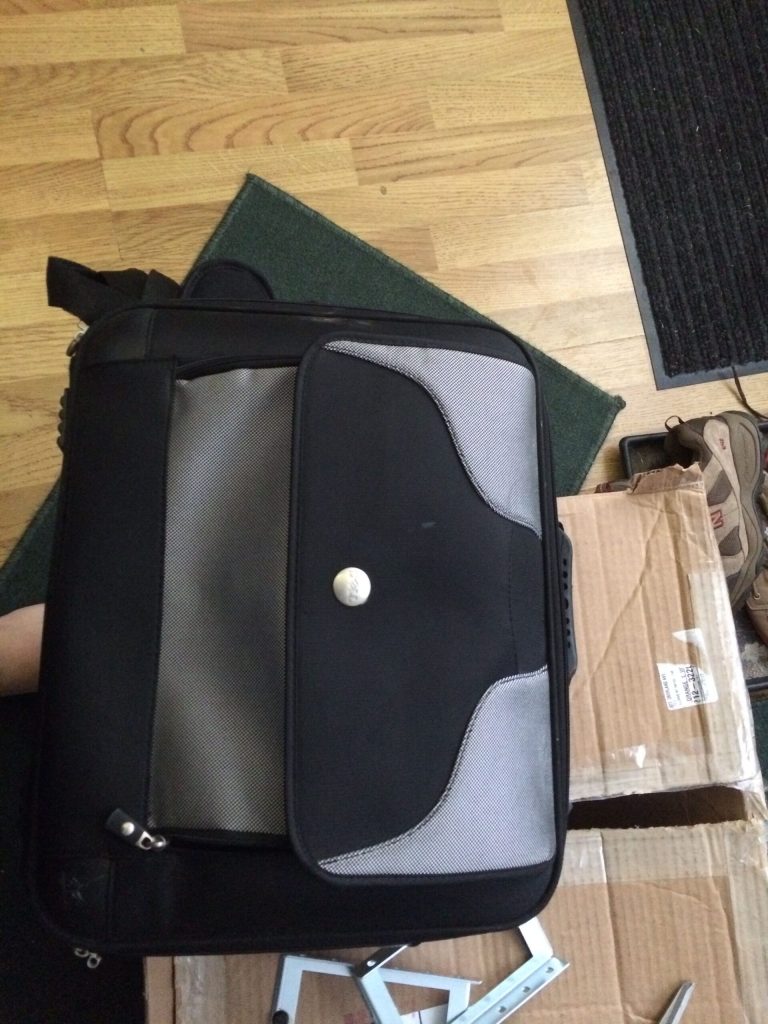
Using an old laptop bag for packaging material is pretty genius! (And you can’t have too many laptop bags!) On the bottom is the rack ears, which I may actually bring the Mitel over to the server barn (i.e. a small rack in the family room.)
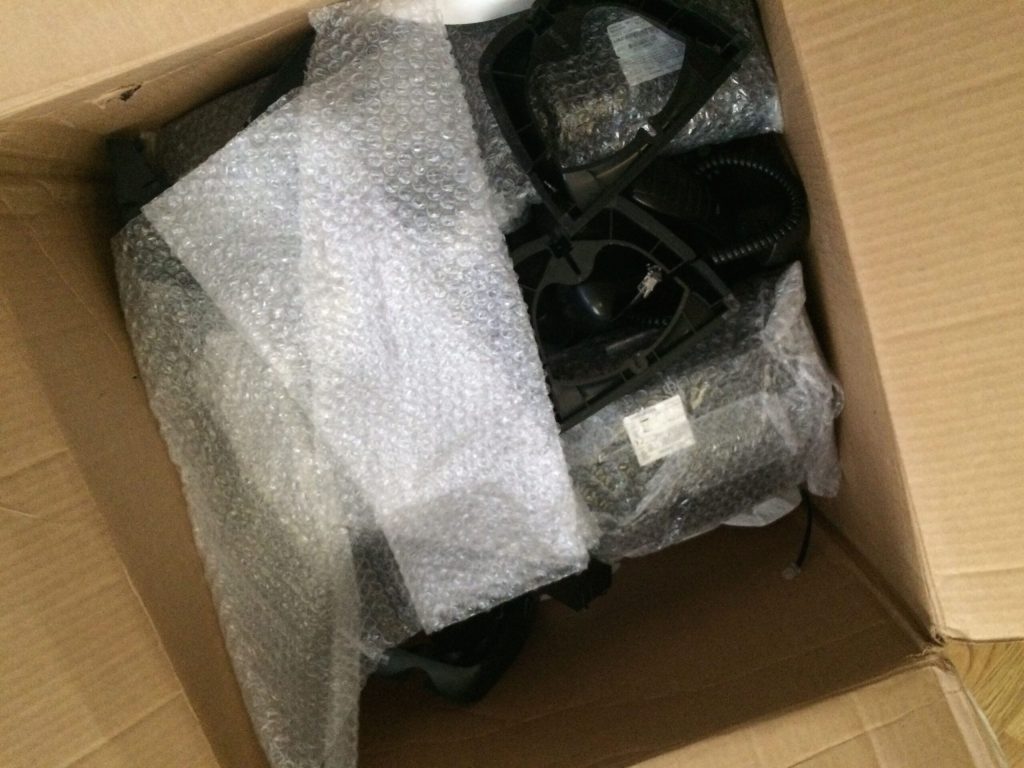
A bunch of Mitel IP phones, I had some extra handsets, wonder if they can work on the headset jack for “training” uses, you know, hehe?
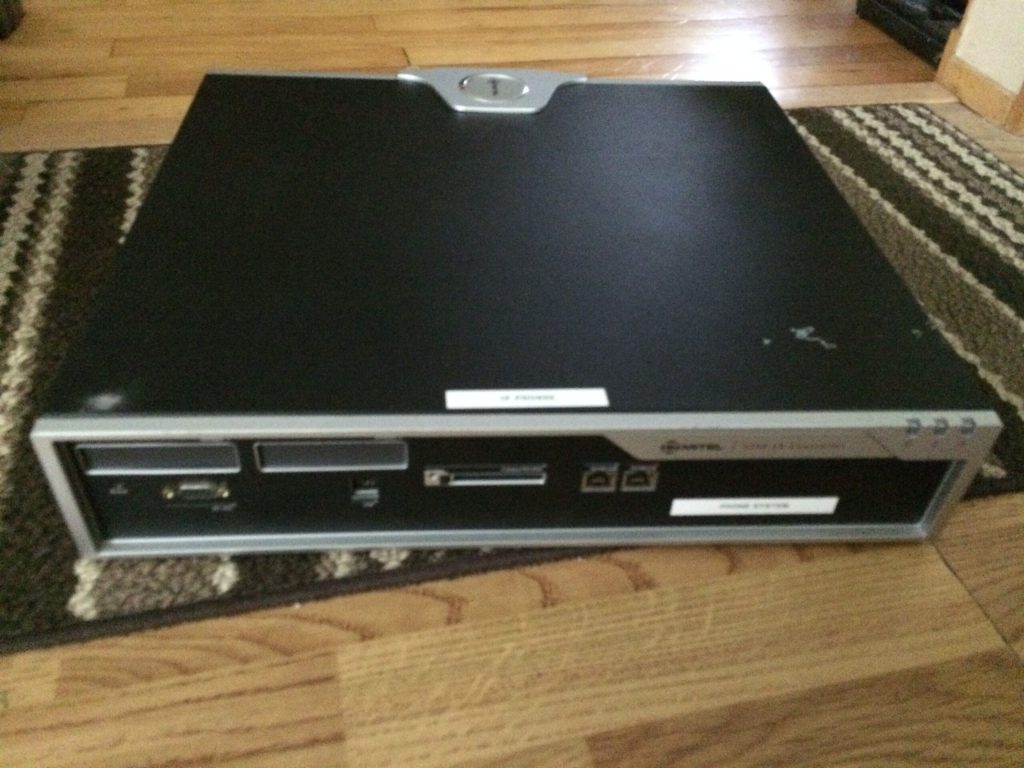
The basic Control Unit, without digital boards (in the front panel.) I’ve yet to open up the system because I believe its screwed shut, and I just found time to blog on this – as I haven’t gotten into the inside – yet.
Not sure if I have the formal OK to post this image from a private email from Jason, here is an inside of his he took for me to see.
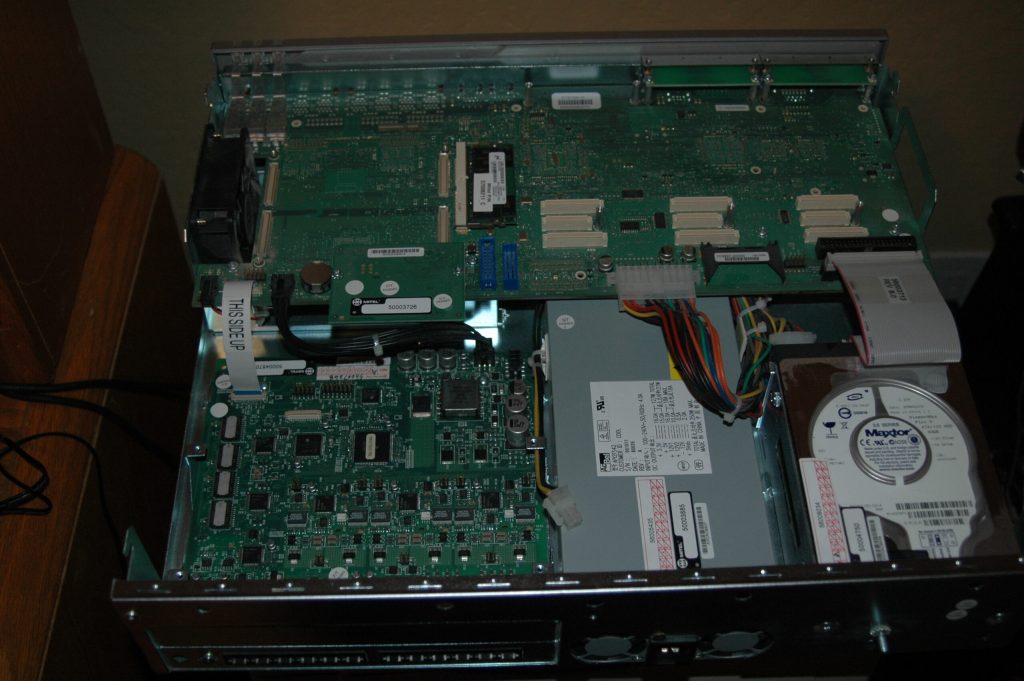
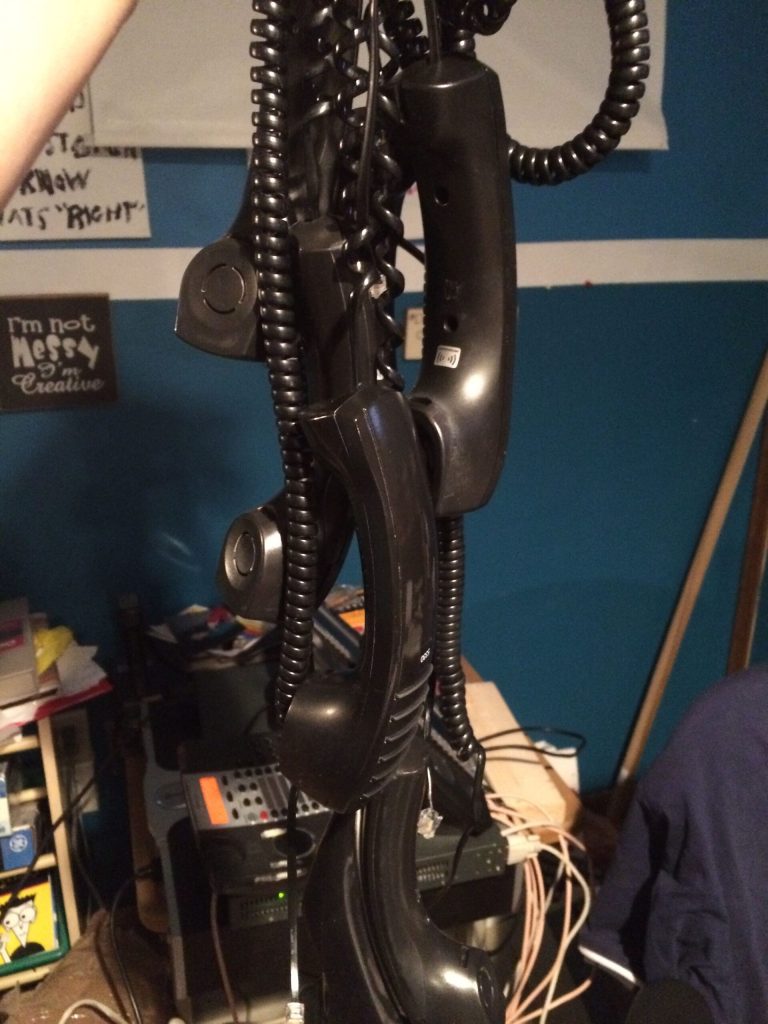
This looked a little artsy.
I did get more handsets than telsets, and the box could’ve held about 12 Mitel IP sets. Mitels are cool in the design because the way they made it low profile. The sets are heavily curved, so a 7″ deep set of a modern Mitel equates to a 8″ of a traditional boxy telset. (These in fact remind me of the Merlin style believe it or not.) This also comes from the same vendor that made some really odd looking sets in the late 80s, ones I haven’t taken photos of. Mitel also made some really odd looking first gen screen phones. I don’t have a picture handy, and I think it’s best to try to let it rot and not put it on the Web.
Setting up the Mitel was really easy, given the dependency on an old version of Internet Explorer (the admin is about a decade old when IE 6 ruled the world – don’t blame me for vendors creating apps just for Microsoft!) and navigating through its prompts I was able to create a dial plan, figured out how to set up the phone’s line appearances, etc.
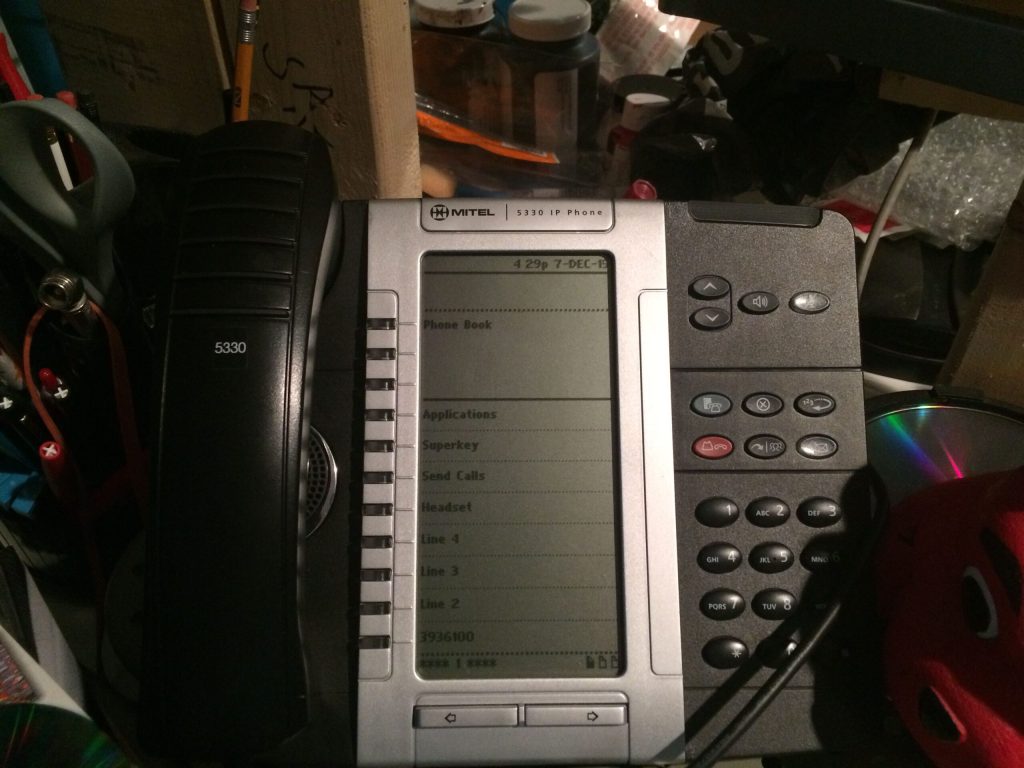
I got a few 5330s, their screen based sets. They are similar to Avaya’s 960x series, to not fully alienate traditional desktop users. The main information is on the top, and the lines and feature are below the solid black line. Page up through 3 pages and you can have up to 24 features and lines. (From my experiences, you can’t go beyond 4 call appearances -sometimes called “Multicall” on Mitels, but there maybe a loophole with bridged appearances.)
(You wonder how come I have “Send Calls” on the screen? Simple, you can rename feature keys or anything for that matter, which is good if you cutover from one vendor to another and try to mitigate retraining… wait, IT guys ask what is “training”?)
A caveat I learned was the blue button known as the Superkey does not work like other Mitel sets. For these 5330s, you have to program a feature button also known as a Superkey to change ringers, and other settings – for me it’s a little weird. Hardware specific on the 5330s is done on the actual blue key – which to others could be mistaken as a Superkey.
Despite other oddities, the system compensates it with very feature rich functions on the sets themselves. If you don’t get through to another user, you can activate their MWI by pressing your VM access key while ringing – which is kinda cool.
—
This is an incomplete post with more pictures and video to follow.
When I visit to local capital cities, I try to get the state government’s printed directories. I know New Hampshire, Maine, Vermont (used to) and maybe a few others in the area I can’t confirm…but I do know Massachusetts firmly doesn’t . I had purchased the New York City’s directory (known as the “Green Book”) online a few years ago, since I haven’t visited the city up until this past April.
The New York State government, however has gone through a massive transformation of government bureaucracy thanks to the leadership of Andrew Cuomo. I had visited Albany last year in April, and I was planning to get the directory then. However, the webpage where you find that information was taken down. This was around the same time they had a separate office for the Chief Information Officer and their Information Technology agency. These agencies merged by this point. I do remember briefly, if I went to the Corning Tower maybe on like the 34th Floor, I could see the operator and request the directory. I didn’t know how to get to that floor, only to go to the top and see Upstate New York.
With that said, I found this web page I was trying to look for that April, now they are located on the concourse in the Empire State Plaza (pretty interesting where they relocated this place.) However, I don’t have plans to visit the northern part of NY for a while, so I mailed a check about a week and a half ago, and I got this on Friday. It left Albany the afternoon before!
The book however contains all the departments, and all their employees that work for the state side of the government, as well as other contact information. It is a few years old, and given the economy, the Internet replacing hard copies, and the requirement for the government to be more efficient, it is still available as of this writing. It’s a neat directory for only about $3.00 if you ever happen to stop at the Empire State Plaza complex and buy it directly.
You can say whatever you want about big government or how inefficient it can be, but this was pretty awesome I got this within timely manner (even if I might be the only out of stater that request these thing on seldom occasions!)
Now I am waiting for the check to clear!
Here is another private collection of another office telephone. It’s an AT&T (now Avaya) 7102 Analog telephone.
These were made by AT&T in the mid to late 80s, sports the “R” handset (Merlin style) while having a basic featureset with a 12 digit dial pad and a “Recall” (read: Flash) to use additional features of the PBX or “Call Waiting” as this terminal can – in fact – be used for residential landline services.
In fact, the ringer is much like the very old AT&T 1810 digital answering machine/house phone I had at my family’s house. It doesn’t have the sound of the digital telephones unfortunately.
I bought this on eBay a while back, and here is the gallery

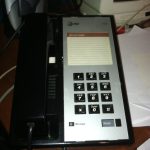
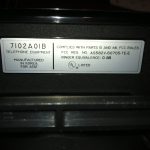


It was made in Korea, kinda odd for phones to be made out of the States at that time. Maybe this was built in the same plant as the other consumer phones that AT&T continued to produce leading to the spinoff to Lucent in 1996. I opened the phone and the guts looked like a cheap Asian produced device.
This phone however, is a shell of a BIS-10 (or a 7410 Plus), take the DESI paper off, and you’ll see the empty spots for those buttons. It was kinda surprising to see, but I guess since there was a membrane cover, it didn’t matter. I’ll post that picture (and redo the picture gallery in a neater workspace) at a later time.
Welcome to my latest venture into mutlimedia blogging. This blog will contain pictures of telephones dating from the early 1900s manual powered phones to the latest Voice over IP telephones of today. This blog will feature circuit cards to notable headsets to my personal collection of phones and communications.
Please enjoy this blog as its in Alpha Tier.